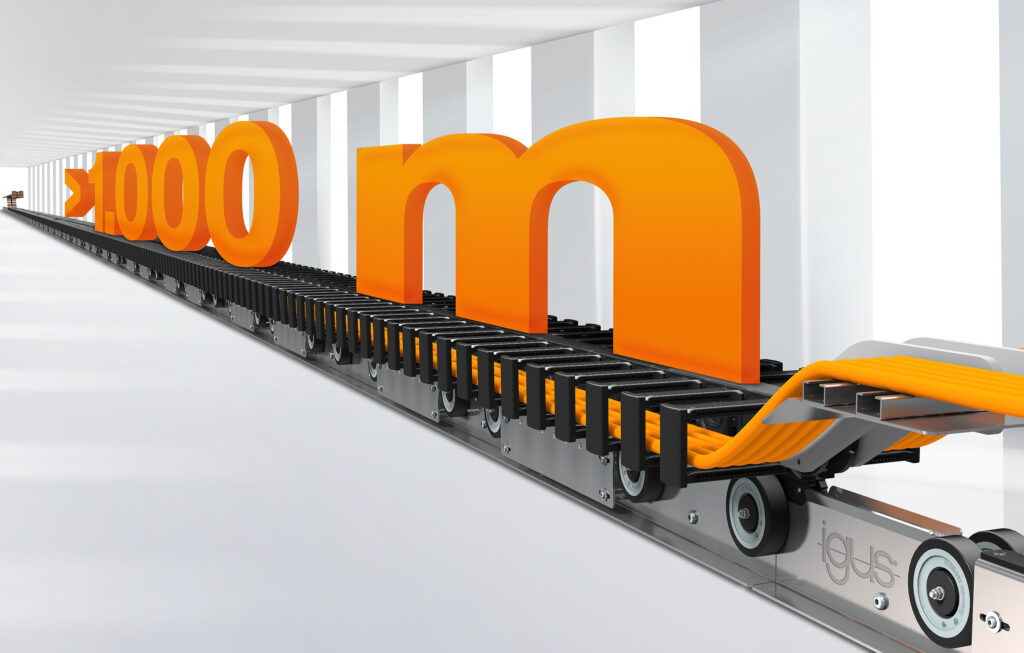World’s first driven e-chain system for very long travels, by igus
04/10/2022

igus’s new, drive-chain has high dynamics, integral load support, long service life and can save up to six tons of weight for port cranes.
Commercial port operations use rail-bound Automated Stacking Cranes (ASC) to process high volumes of shipping containers. These, and other applications that require long e-chain travels, will benefit from a new drive-chain from igus that is almost limitless on long travel distances, with high dynamics and long running times. The world’s first energy chain with its own drive ensures significantly higher running times on extremely long travel distances, because hardly any tensile loads or thrust forces act on the e-chain.
Forty years ago, container ships were tiny compared to today and held an average of 1,000 containers. Today, giants of the Triple-E-Class load almost 24,000 containers. This rising trend means that ports must continuously modify their infrastructure, including automated stacking cranes that load containers onto trucks and tow wagons. These huge overhead cranes cover distances of several hundred metres and more on rails. In many cases, the motor cables must track the movement of the ASC cranes. “For lengths of more than 1,000 metres, however, enormous tensile and thrust forces act on the e-chains,” says Justin Leonard, director of the e-chains business unit at igus UK. “To prevent this and to optimise the longevity of the energy supply systems in such extreme applications, we are the first manufacturer in the world to develop an energy chain with its own drive.”
e-chains follow the movement of ASC cranes with their own drive
The drive-chain design concept works as follows: So-called drive blades are mounted in the chain’s outer radius, with which the e-chain is driven along the lower run. On the lower rail there are motor-driven friction wheels on the sides and rollers on the top. When the crane starts, the friction wheels’ motors also start. The lower run moves over the rail, a synchronized movement in which hardly any forces act on the chain links via the carrier.
“This means that we achieve minimal load, low wear and long running times over distances of 1,000 metres and more,” says Leonard. In addition, igus is already working on an alternative drive concept where the friction wheels are replaced by linear electric drives.
e-chains with drives are green alternative to motorised cable drums
Energy supply systems with their own drive are an economical alternative to a classic energy supply system that has been used in ASC cranes for decades: motorised steel drums that collect the motor cables, often working in two directions when the fixed point of the line is in the middle of the route. The problem with this system is if the crane approaches this fixed point, it must brake to enable the cable routing to be pivoted. Valuable time is lost – critical when ports are under pressure to increase their productivity. In addition, motor drums can weigh 4 to 6 tonnes which significantly increases the energy consumption of the crane.
“Since the drive-chain runs uninterrupted on the rail, ASC cranes no longer have to brake near the fixed point in the middle, so they can work more productively,” says Leonard. “At the same time, the e-chain system does not increase the total weight and nor therefore the required drive power of the system. Due to the system’s lower weight, speeds of six m/s are possible even over long distances. These factors combined are major advantages from which more and more port operators around the world are benefiting.”
